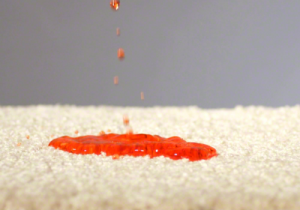How To Become A Flooring Contractor?
The flooring industry is a dynamic and essential part of the construction and home improvement sectors. As a flooring contractor, you will play a vital role in transforming spaces by installing and repairing various types of flooring, including hardwood, tile, carpet, and laminate. If you are considering a career in this field, this guide will provide you with the steps and insights needed to become a successful flooring contractor.
Step 1: Gain Experience and Knowledge
The first step to becoming a flooring contractor is gaining experience and knowledge in the field. This can be achieved through various means:
- Apprenticeships and On-the-Job Training: Working under the supervision of an experienced flooring contractor is one of the best ways to learn the trade. Apprenticeships offer hands-on training and a thorough understanding of the tools, materials, and techniques used in flooring installation and repair.
- Vocational Schools and Community Colleges: Many vocational schools and community colleges offer courses in flooring installation and related fields. These programs provide a solid foundation in the technical aspects of flooring and often include practical experience.
- Online Courses and Tutorials: There are numerous online resources, including video tutorials and courses, that can help you learn the basics of flooring installation. While these resources are valuable, they should complement, not replace, hands-on training.
Step 2: Obtain Necessary Certifications and Licenses
Once you have gained sufficient experience, the next step is to obtain the necessary certifications and licenses. The requirements for becoming a flooring contractor vary by state and locality, so it is important to research the specific regulations in your area. Generally, you will need to:
- Pass a Certification Exam: Many states require flooring contractors to pass a certification exam that tests their knowledge and skills. This exam may cover topics such as building codes, safety regulations, and flooring installation techniques.
- Obtain a Contractor’s License: A contractor’s license is typically required to operate legally as a flooring contractor. The requirements for obtaining a license vary, but they often include passing an exam, providing proof of insurance, and paying a licensing fee.
- Stay Up-to-Date with Continuing Education: The flooring industry is constantly evolving, with new materials and techniques being developed. To stay competitive, it is important to continue your education and stay current with industry trends.
Step 3: Build Your Business
With the necessary experience, certifications, and licenses in hand, you are ready to start your own flooring business. Building a successful flooring business involves several key steps:
- Create a Business Plan: A well-thought-out business plan is essential for guiding your business and securing financing. Your business plan should outline your goals, target market, services offered, pricing strategy, and marketing plan.
- Register Your Business: Register your business with the appropriate government agencies, and obtain any necessary permits and licenses. This may include registering your business name, obtaining a tax identification number, and setting up a business bank account.
- Purchase Tools and Equipment: Investing in high-quality tools and equipment is crucial for providing excellent service and ensuring the safety of your employees. Essential tools for flooring contractors include saws, sanders, nail guns, and measuring tools.
- Develop a Marketing Strategy: To attract clients, you will need an effective marketing strategy. This can include creating a professional website, networking with other contractors and real estate professionals, and advertising in local media.
Step 4: Deliver Outstanding Service
Providing exceptional service is key to building a strong reputation and securing repeat business. Here are some tips for delivering outstanding service as a flooring contractor:
- Communicate Clearly with Clients: Effective communication is essential for understanding your clients’ needs and expectations. Make sure to discuss the project details, timeline, and budget upfront, and keep your clients informed throughout the process.
- Pay Attention to Detail: Flooring installation requires precision and attention to detail. Take the time to measure accurately, cut materials correctly, and ensure that the flooring is installed smoothly and securely.
- Offer Quality Workmanship: The quality of your workmanship will determine your reputation and the success of your business. Use high-quality materials and follow best practices to ensure that your installations are durable and attractive.
- Provide Excellent Customer Service: Treat your clients with respect and professionalism, and address any concerns or issues promptly. Positive word-of-mouth and customer referrals are invaluable for growing your business.
Conclusion
Becoming a flooring contractor involves gaining experience, obtaining necessary certifications and licenses, building a business, and delivering outstanding service. By following these steps, you can establish a successful career in the flooring industry and make a positive impact on your clients’ homes and businesses.
If you are looking for a reputable flooring contractor in Peoria, AZ, consider Kennedy Tile and Flooring. With years of experience and a commitment to quality, Kennedy Tile and Flooring offers a wide range of flooring services to meet your needs.




